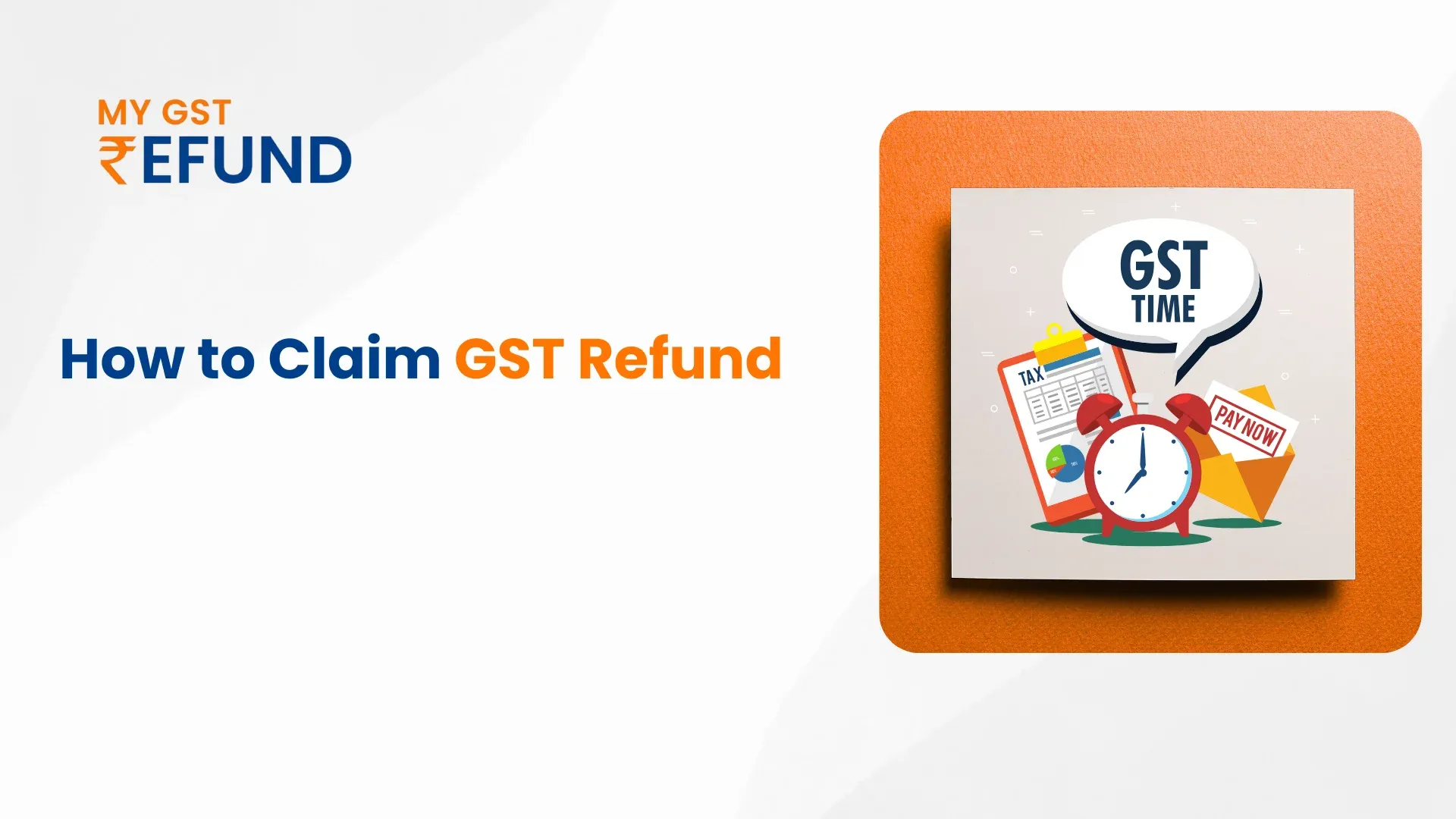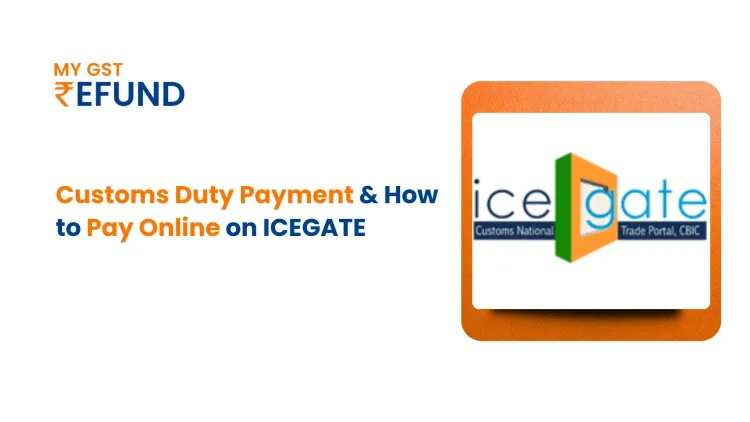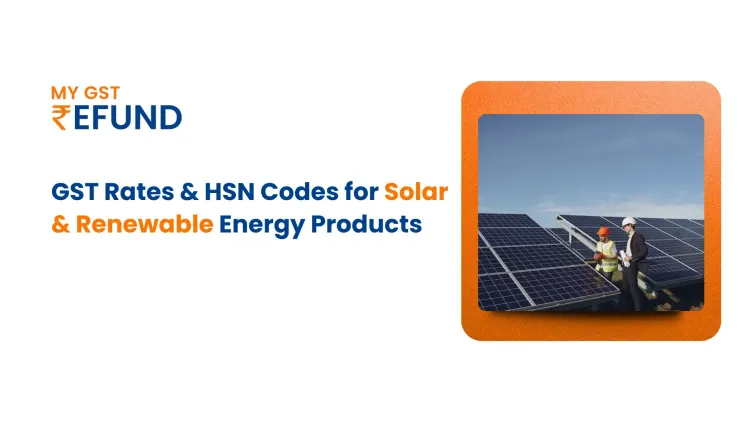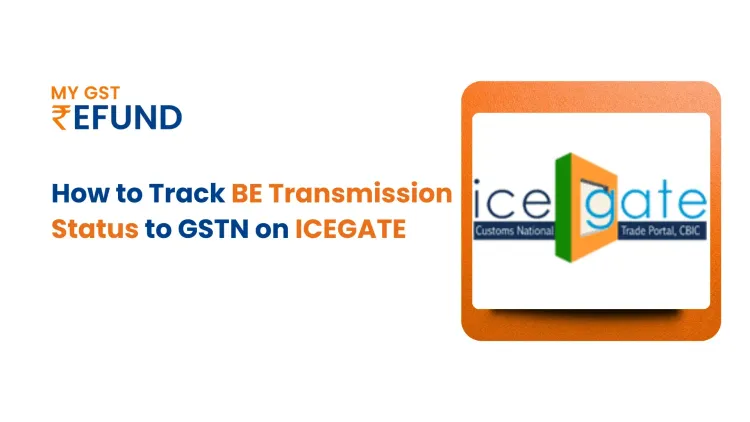How to Claim GST Refund
If you are a registered business owner or taxpayer, you may be eligible for a GST refund under the IGST Act, 2017. The government of India allows both businesses and individual taxpayers to claim refunds on excess GST paid. Thereby assisting in maintaining steady cash flow and ensuring proper compliance with tax regulations.
This article will explain how to claim a GST refund, when you should do it, and what documents you’ll need, step by step. It's a simple guide to help you claim your refund without hassle.
What is a GST Refund?
A GST refund is money the government returns to you if you’ve paid more tax than required, such as in the case of exports or unused input tax credit. It helps keep your business finances steady. To apply, you’ll need to fill out Form GST RFD-01 and send it in with the necessary documents. The process follows fixed rules laid out under the GST system.
Read More: GST Refund Process, Claim, and Time Limit
Who Can Claim a GST Refund?
Do you know that taxpayers can request a GST refund, depending on their situation, as outlined in Section 54 of the CGST Act, 2017?
Paid Too Much GST by Mistake
You can obtain a refund of additional GST payments that resulted from calculation errors or the inappropriate selection of tax categories.
Accumulated Input Tax Credit (ITC)
Exporters and people who deal with zero-rated items sometimes collect more ITC than they owe in tax. If this happens, they can claim a refund. This also applies if they pay IGST while exporting goods or services.
Exporting Goods or Services
Businesses that export can get back the GST (IGST) they paid during the export process. This is because exports are not meant to be taxed within the country.
UN Agencies and Embassies
Agencies belonging to the United Nations and foreign embassies generally operate without paying tax obligations. Foreign organizations that purchase items in India are eligible for GST refund benefits.
Inverted Duty Structure
A business can obtain refund payments for the additional GST expenses that exceed the GST revenue collected from its finished products. Textile industries frequently experience this situation.
Provisional Tax Assessment Changed
Sometimes the government gives a temporary (provisional) tax amount to be paid. If the final amount turns out to be less, the business can get a refund for the extra tax it paid earlier.
Foreign Tourists
International tourists can get a refund on GST paid on goods they buy in India if they follow the proper steps before leaving the country. This makes shopping in India more attractive for visitors.
Errors in GST Return or Payment
If you made a mistake in your GST filing and paid more than required, you can file for a refund using the GST portal.
Pro Tip: Instantly Check Your GST Refund Eligibility with Our 'Know Your GST Refund' Tool!
Prerequisites Before Filing a GST Refund
To know how to claim a GST refund, you have to follow certain steps carefully. Here are the detailed steps outlined to get your GST claim.
Pro Tip: Calculate Your GST Refund Now with Our Simple Tool!
Types of GST Refunds
Under the Goods and Services Tax (GST) system, businesses and individuals may claim refunds in the following cases:
- Refund of the extra balance in the electronic cash ledger
- Refund of input tax credit (ITC) for exports made without charging GST
- Refund for supplies made to SEZ units or developers without charging GST
- Refund of ITC due to a higher tax rate on inputs than on final products (inverted duty structure)
- Refund to buyers in deemed export transactions
- Refund for goods supplied to SEZ units or developers
- Refund for exported goods & Services
- Refund to suppliers involved in deemed export sales
- Refund of tax paid in excess
- Refunds due to any other valid reason
- Refunds resulting from an assessment, a provisional assessment, an appeal, or any government order
- Refunds to embassies and international organizations
- Refund when a transaction was wrongly treated as intra-state or inter-state
Documents Required for GST Refund:
For exports/supply to SEZ:
- Relevant export/supply invoices.
- Statement with shipping/export bill numbers & dates.
- For goods: export invoice details.
- For services: tax invoices & foreign currency payment proof.
For Supply to SEZ:
- Proof of receipt in SEZ from the proper officer.
- Declaration from SEZ unit on non-claim of input tax credit.
For Accumulated Input Tax Credit:
- Statement of invoices as per GST rules.
- Note: No refund for ITC on construction-related services or inverted duty structure.
Based on Court/Authority Order:
- Reference number of the order.
- Related tax invoices.
Key Takeaways
Businesses can get a GST refund, for example, if they export goods, pay more in input tax, or have other valid reasons. Businesses can start the refund process by using Form GST RFD-01 along with necessary document attachments within two years. The majority of exporter refunds are processed to 90% within one week, and proceed at a pace of 60 to 90 days for the remaining amount. You can monitor your refund by visiting the online platform that uses the Application Reference Number (ARN).
Frequently Asked Questions
Who is eligible to claim a GST refund?
GST-registered businesses can claim refunds for exports, unutilised tax credits, excess tax paid, and supplies to SEZs, embassies, and foreign tourists, or as directed by legal or court orders.
What is the time limit to file a GST refund claim?
All GST refund applications require submission within two years of their relevant date, while delayed claims need proper legal justification for approval.
What forms are used to apply for a GST refund?
Refund applications typically use Form RFD-01, with UN bodies using RFD-10. IGST exporters must file correct details in GSTR-1 and GSTR-3B. Additional forms may apply during the process.
Can I claim a GST refund if I have pending returns or outstanding dues?
Applicants must submit outstanding returns to proceed with refunds. Penalties reduce refunds, and active investigations or legal proceedings suspend payments.
How long does it take to receive a GST refund?
Refunds must be processed within 60 days. Exporters get 90% within 7 days. Delays beyond the timeline attract government interest payments.
Related Posts








